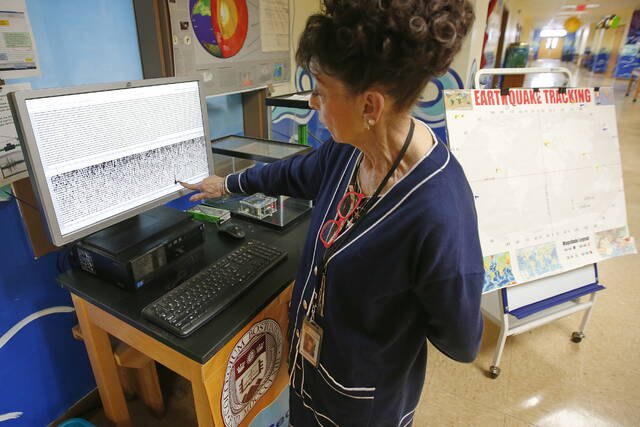NEW YORK — A rare earthquake on the East Coast surprised millions of people from New York and Philadelphia skyscrapers to rural New England on Friday, with no widespread damage but alarming a region not used to earthquakes.
The U.S. Geological Survey stated that more than 42 million individuals may have felt the midmorning quake with a preliminary magnitude of 4.8, centered near Whitehouse Station, New Jersey, or about 45 miles west of New York City and 50 miles north of Philadelphia.
People from Baltimore to Boston and beyond felt the ground shake. Nearly 30 people were displaced as officials evacuated three multifamily homes in Newark, New Jersey, to inspect for damage. Authorities in the region were checking bridges and other major infrastructure, with some flights diverted or delayed, Amtrak slowing trains throughout the busy Northeast Corridor, and a Philadelphia-area commuter rail line suspending service as a precaution.
Christiann Thompson mentioned that in her house near Whitehouse Station, pictures and decorative plates fell off the wall, as relayed by her husband while she was volunteering at a library.
She mentioned, “The dogs became very scared and ran around like crazy.”
Whitehouse Station Fire Chief Tim Apgar mentioned that no injuries were reported, but they received some calls from people who smelled gas. Nearby, the upper part of the 264-year-old Col. John Taylor’s Grist Mill historic site collapsed onto a roadway, according to Readington Township Mayor Adam Mueller.
On the 26th floor of a midtown Manhattan office, Shawn Clark felt the quake and initially feared an explosion or construction accident. The attorney described it as “pretty weird and scary.”
Earthquakes are less common on the eastern than western edges of the U.S. because the East Coast is not located on a tectonic plate boundary. However, the USGS stated that 13 earthquakes of magnitude 4.5 or higher have been recorded within 311 miles of Friday’s quake since 1950. The strongest was a 5.8-magnitude quake in Mineral, Virginia, on Aug. 23, 2011, that was felt from Georgia to Canada.
Scientists note that rocks beneath the East Coast are better at spreading earthquake energy across long distances compared to those in the west.
“If we had the same magnitude quake in California, it probably wouldn’t be felt nearly as far away,” said USGS geophysicist Paul Caruso.
Over a dozen aftershocks were reported in the following hours in the region, including a 4.0-magnitude quake early Friday evening, according to the USGS.



